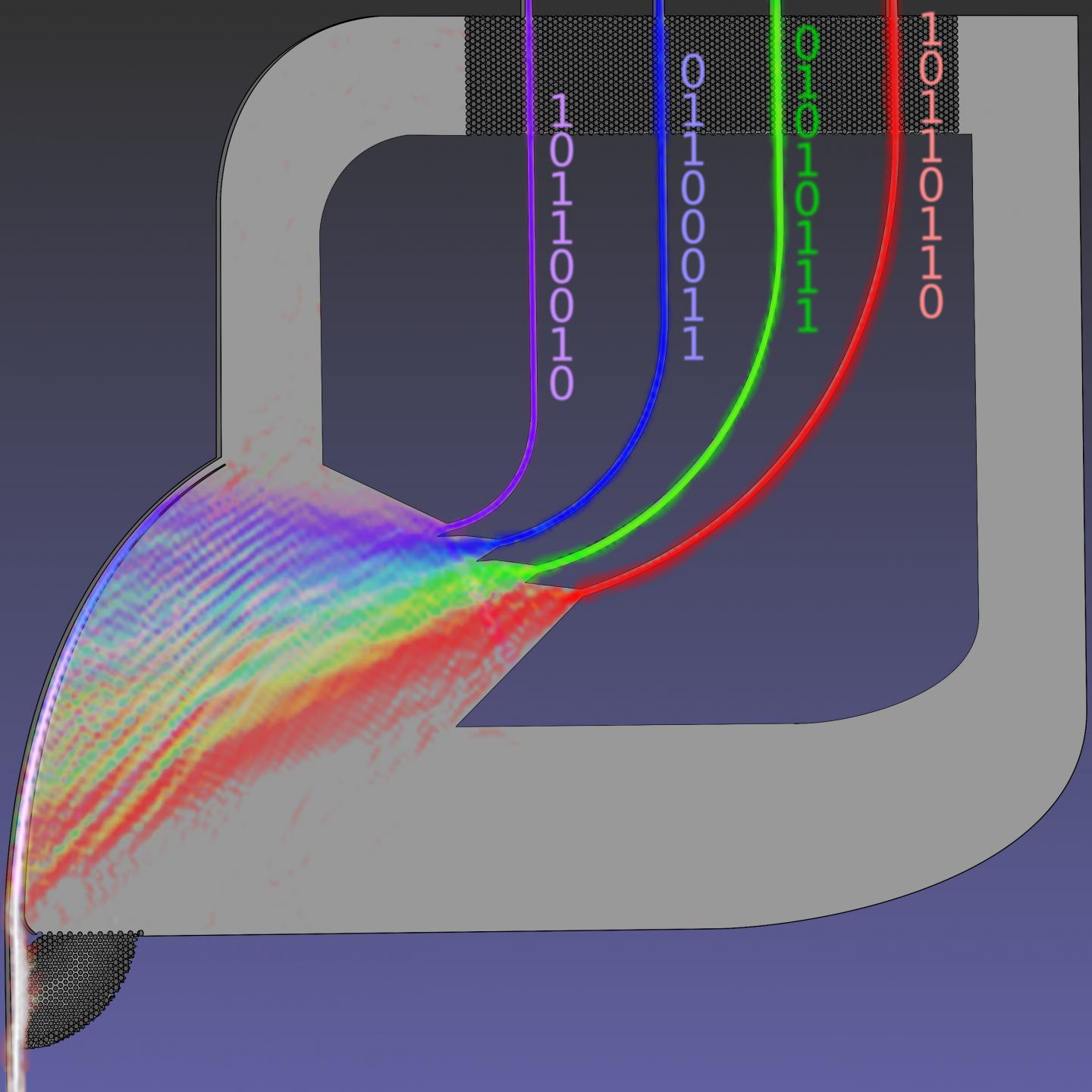VISUALIZATION
A new design of ultra-small silicon chip that manages terahertz waves leads to the next generation of communications
Researchers from Osaka University, Japan, and the University of Adelaide, Australia have worked together to produce the new multiplexer made from pure silicon for terahertz-range communications in the 300-GHz band.
"In order to control the great spectral bandwidth of terahertz waves, a multiplexer, which is used to split and join signals, is critical for dividing the information into manageable chunks that can be more easily processed and so can be transmitted faster from one device to another," said Associate Professor Withawat Withayachumnankul from the University of Adelaide's School of Electrical and Electronic Engineering.
"Up until now compact and practical multiplexers have not been developed for the terahertz range. The new terahertz multiplexers, which are economical to manufacture, will be extremely useful for ultra-broadband wireless communications.
"The shape of the chips we have developed is the key to combining and splitting channels so that more data can be processed more rapidly. Simplicity is its beauty." 
People around the world are increasingly using mobile devices to access the internet and the number of connected devices is multiplying exponentially. Soon machines will be communicating with each other in the Internet of Things which will require even more powerful wireless networks able to transfer large volumes of data fast.
Terahertz waves are a portion of the electromagnetic spectrum that has a raw spectral bandwidth that is far broader than that of conventional wireless communications, which are based upon microwaves. The team has developed ultra-compact and efficient terahertz multiplexers, thanks to a novel optical tunneling process.
"A typical four-channel optical multiplexer might span more than 2000 wavelengths. This would be about two meters in length in the 300-GHz band," said Dr. Daniel Headland from Osaka University who is the lead author of the study.
"Our device is merely 25 wavelengths across, which offers dramatic size reduction by a factor of 6000."
The new multiplexer covers a spectral bandwidth that is over 30 times the total spectrum that is allocated in Japan for 4G/LTE, the fastest mobile technology currently available and 5G which is the next generation, combined. As bandwidth is related to data rate, ultra-high-speed digital transmission is possible with the new multiplexer.
"Our four-channel multiplexer can potentially support an aggregate data rate of 48 gigabits per second (Gbit/s), equivalent to that of uncompressed 8K ultrahigh definition video being streamed in real-time," said Associate Professor Masayuki Fujita, the team's leader from Osaka University.
"To make the entire system portable, we plan to integrate this multiplexer with resonant tunneling diodes to provide compact, multi-channel terahertz transceivers."
The modulation scheme employed in the team's study was quite basic; terahertz power was simply switched on and off to transmit binary data. More advanced techniques are available that can squeeze even higher data rates towards 1 Terabit/s into a given bandwidth allocation.
"The new multiplexer can be mass-produced, just like computer chips, but much simpler. So large-scale market penetration is possible," said Professor Tadao Nagatsuma from Osaka University.
"This would enable applications in 6G and beyond, as well as the Internet of Things, and low-probability-of-intercept communications between compact aircraft such as autonomous drones."

